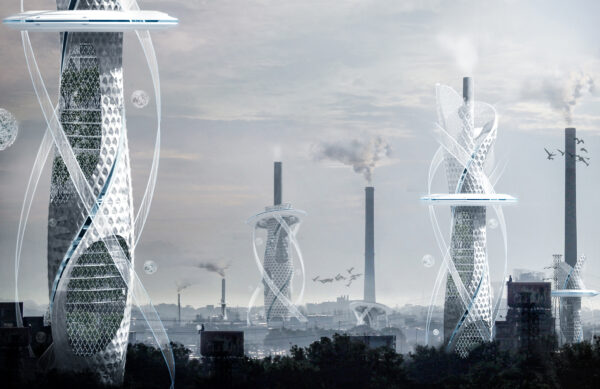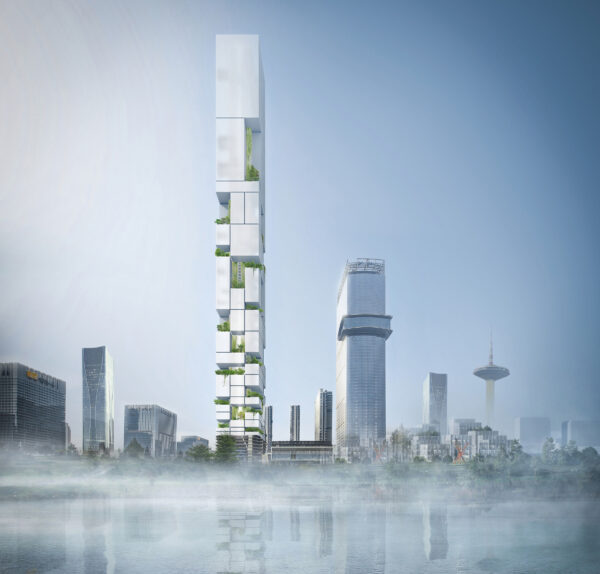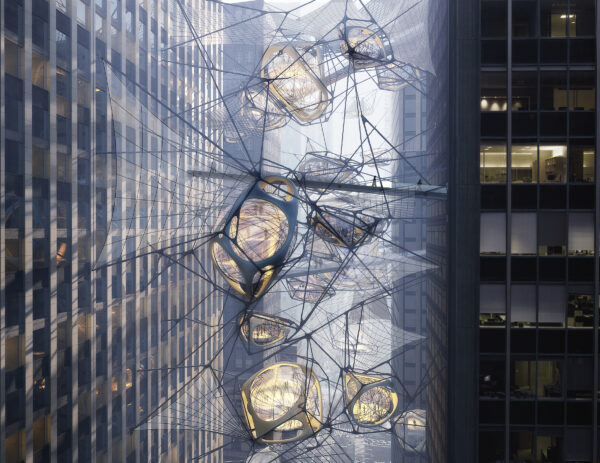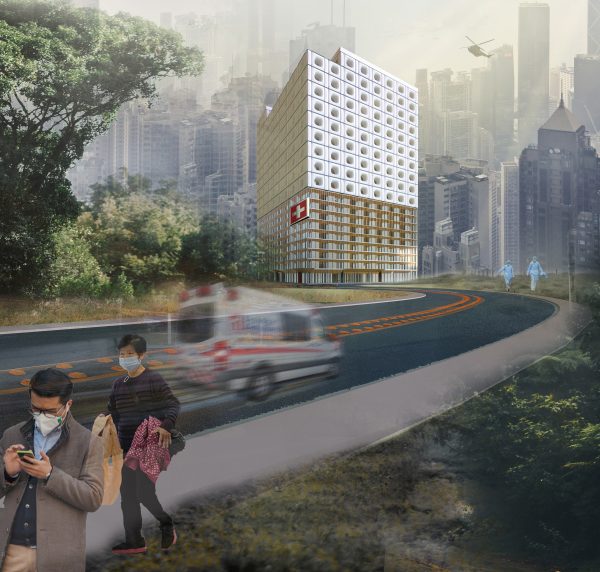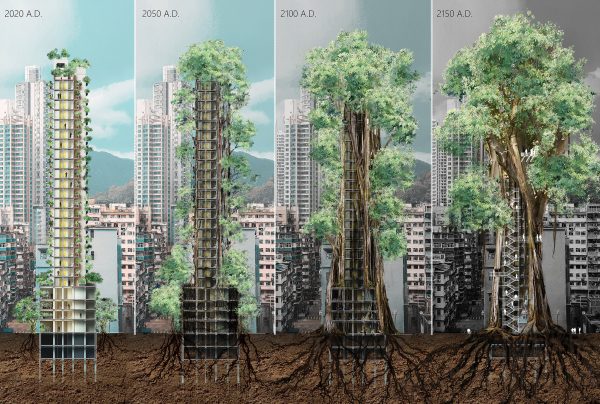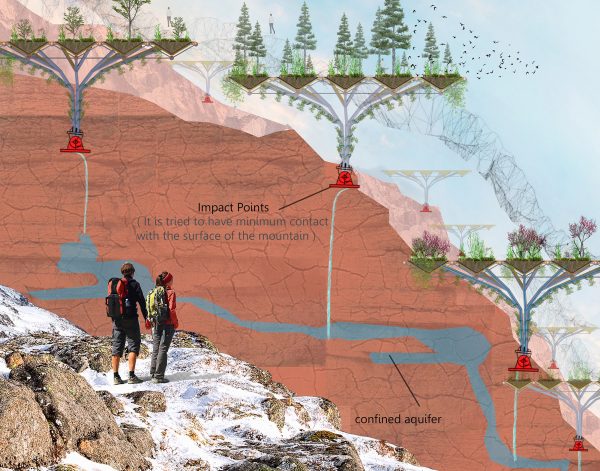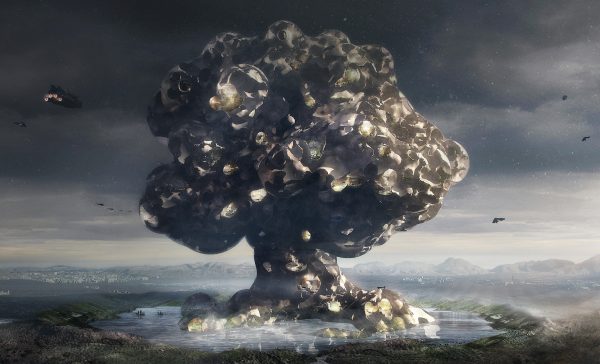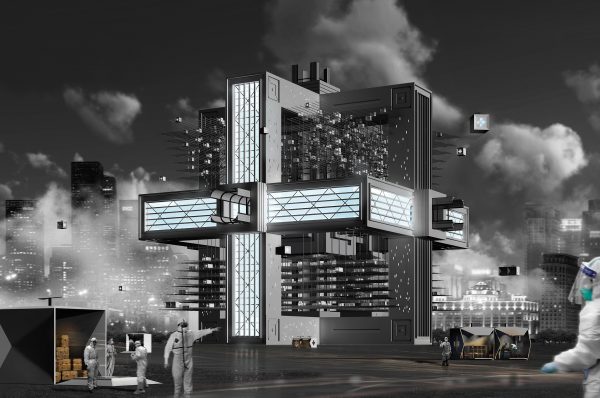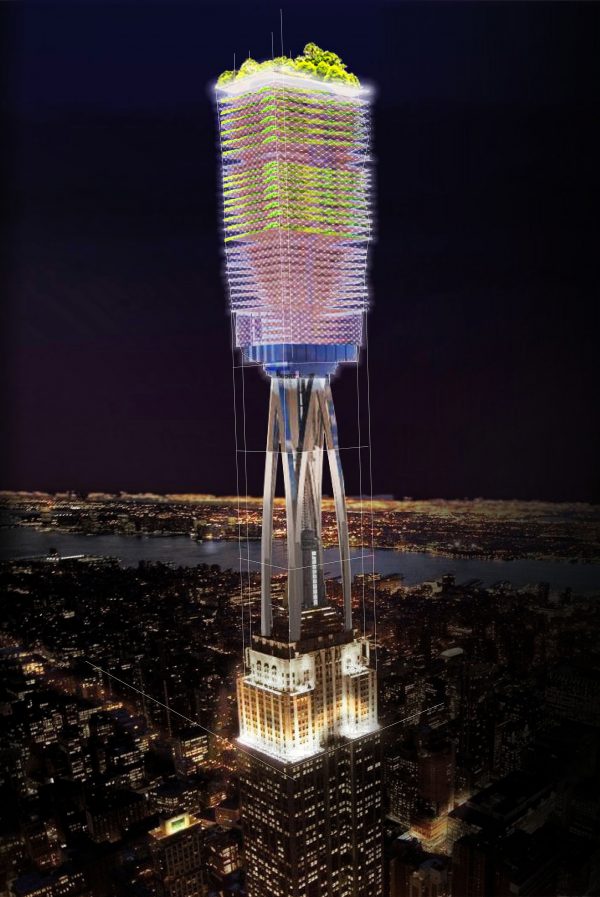Honorable Mention
2021 Skyscraper Competition
Xuekui Liu, Yashu Chen, Liyu Ai, Hao Wang, Jialu Xu
China
Economic development has changed the appearance of the earth, but also put it in misery. This triggered our thinking: Is development and the ecological environment contradictory? How to make the relationship between humans and nature become “symbiosis” instead of “parasitic”?
The historic mission of Smokestack
Starting from the invention of the steam engine, mankind slowly entered the industrial society and their life has unprecedentedly improved. As a symbol of the industrial revolution, factory smokestack has brought prosperity to human society, as well as many environmental and climate problems. The conflict between human development and nature is particularly intense in developing countries. The International Energy Agency predicts that by 2030 there will be more than 50,000 active coal power stations and millions of factories in the world, of which 85% of the energy is still fossil fuels. The substances produced by the burning of fossil fuels can cause – global warming, air pollution (London smog episode, Smog alert in China), and water pollution.
Smokestack: Symbiosis
Symbiosis is a mutually beneficial relationship between two different species in nature. Providing energy and materials, the Symbiosis skyscraper is attached to the chimney, which can also absorb harmful substances. In the beginning, the Symbiosis Skyscraper only needed a 3D printing ring, and the printing materials were completely provided by burning waste and plant fibers, starting from the bottom of the smokestack and spiraling up and printing around. With the growth of Symbiosis Skyscrapers, its ability to absorb harmful substances produced by smokestacks has continued to increase, reducing smokestack emissions. When it reaches its final form, the factory smokestack will no longer emit harmful substances and achieve “carbon neutral”. At the same time, the waste heat generated by smokestacks is used to create nature greenhouses, purify the surrounding air, and turn the smokestack into a symbiotic building that merges with nature. Read the rest of this entry »

